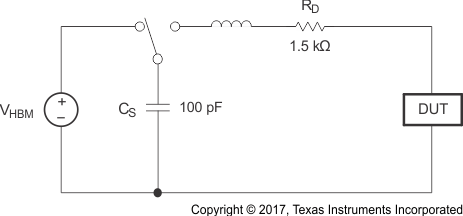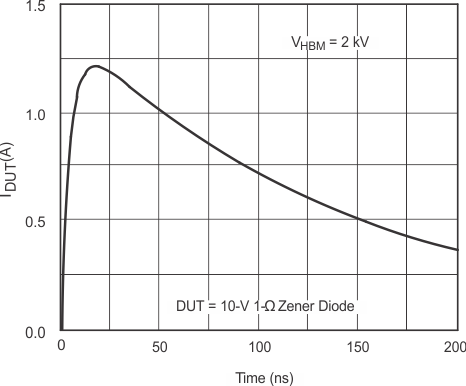SLLS789E April 2007 – December 2022 TRS3243E
PRODUCTION DATA
- 1 Features
- 2 Applications
- 3 Description
- 4 Revision History
- 5 Pin Configuration and Functions
- 6 Specifications
- 7 Parameter Measurement Information
- 8 Detailed Description
- 9 Application and Implementation
- 10Device and Documentation Support
- 11Mechanical, Packaging, and Orderable Information
Package Options
Mechanical Data (Package|Pins)
Thermal pad, mechanical data (Package|Pins)
- RHB|32
Orderable Information
9.1.1.3 Human-Body Model (HBM)
The HBM of ESD testing is shown in Figure 9-2, while Figure 9-3 shows the current waveform that is generated during a discharge into a low impedance. The model consists of a 100-pF capacitor, charged to the ESD voltage of concern, and subsequently discharged into the DUT through a 1.5-kΩ resistor.
 Figure 9-2 HBM ESD Test Circuit
Figure 9-2 HBM ESD Test Circuit Figure 9-3 Typical
HBM Current Waveform
Figure 9-3 Typical
HBM Current Waveform